Newsletters
2024 Annual Report
Putting down roots, spreading branches
2024 was a year of building strong organizational foundations, cultivating partnerships, and extending our reach.
Message from our Chair
It’s been a truly inspiring year for Creative Crisis Leadership. We’ve put down deep roots and formalized our commitment to reinventing disaster preparedness education by becoming an independent corporation and gaining 501(c)(3) status. With the seeds of our mission now in our own hands, we are ready to dig in, branch out, and flourish.
Our work is bearing bountiful fruit. Our presence in Napa and Sonoma counties continues to branch out, allowing us to connect directly with the people we aim to serve and build crucial awareness. Strategic partnerships with community-based organizations have significantly amplified our understanding of key needs, helping us to cultivate a resilient network from the ground up.
Our blossoming collaborations with universities are proving invaluable, providing rigorous research frameworks that are increasingly demonstrating the lasting positive impact our games have on individuals navigating challenging situations. This scientific validation reinforces our mission and highlights the unique power of play to foster resilience.
This progress would not be possible without the steady leadership of our founder and executive director, Susanne Jul, whose vision continues to guide our growth. We are equally grateful for the creativity and dedication of Garett Dworman, whose design expertise has been instrumental in our success. Our thanks also go to long-term volunteers Zach Pipkin, Robin Parvin, and Neetu Deka, our brilliant team of Advisors, and all who have given time, money, and ideas to nurture our growing impact.
Looking ahead, the prolific growth of this past year feeds our ambition. With game design, academic research, and community engagement working in harmony, Creative Crisis Leadership is well-positioned to reach new heights. We plan to tend to our garden by expanding our board, diversifying revenue streams, and, closest to our hearts, deepening our engagement with communities.
We remain steadfast in our dedication to leveraging the power of games to foster lasting positive change. I am deeply grateful to our team, partners, supporters, and the communities we serve for helping grow this vision into a vibrant reality.
— Lindsay Burr, Board Chair & President

2024 in numbers

79 game plays
We played at least 79 wildfire games: 66 Board Game, 13 Café Game.
How do we count?
66 BOARD GAMES
 The heart of the game board is a removable sheet of paper. During the game, we mark up the front side to track what challenges players face and what choices they make. After the game, they get to take it away as a souvenir and reminder of their decisions. (The back side has additional information about us and about wildfire preparedness.)
The heart of the game board is a removable sheet of paper. During the game, we mark up the front side to track what challenges players face and what choices they make. After the game, they get to take it away as a souvenir and reminder of their decisions. (The back side has additional information about us and about wildfire preparedness.)
So each game starts with a fresh sheet on the board. Each pile of extra sheets is held down with a jar of coins — pennies for English, nickels for Spanish:
When we pull a new sheet for the board, we move a coin from that jar to a counting jar. At the end of the day, we determine the number of games played by counting the coins in the counting jar.
We try to be consistent, but know that we occasionally miss moving a coin when we get really busy. So we probably played more than the 66 games we recorded.
13 CAFÉ GAMES
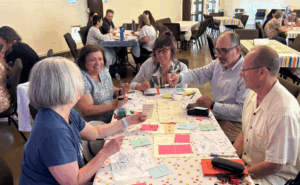
Counting Café Games is simpler: The game is played in groups of 4-8, so we simply count the number of groups playing each time through.

374 different players
We played with at least 374 individuals: 310 Board Game, 64 Café Game.
How do we count?
310 BOARD GAME PLAYERS

With participants’ permission, we take a picture of them after every game. Of course, not everyone wants their picture taken, and we sometimes forget. But we always get enough pictures that we can use the average number of people in them as an approximation for the average number of people playing at an event.
We then multiply the average number of players per game with the number of games we played at that event to get a reasonable estimate of how many individuals participated.
64 CAFÉ GAME PLAYERS
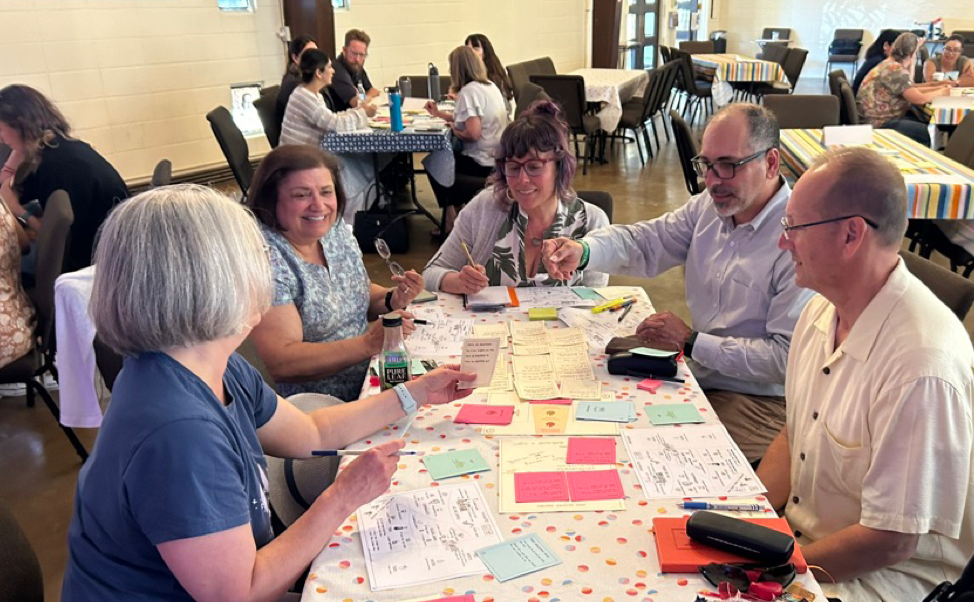
This is a longer sit-down experience, so we have time to make an exact count. Some events have sign-in sheets, and we don’t even have to do that much!
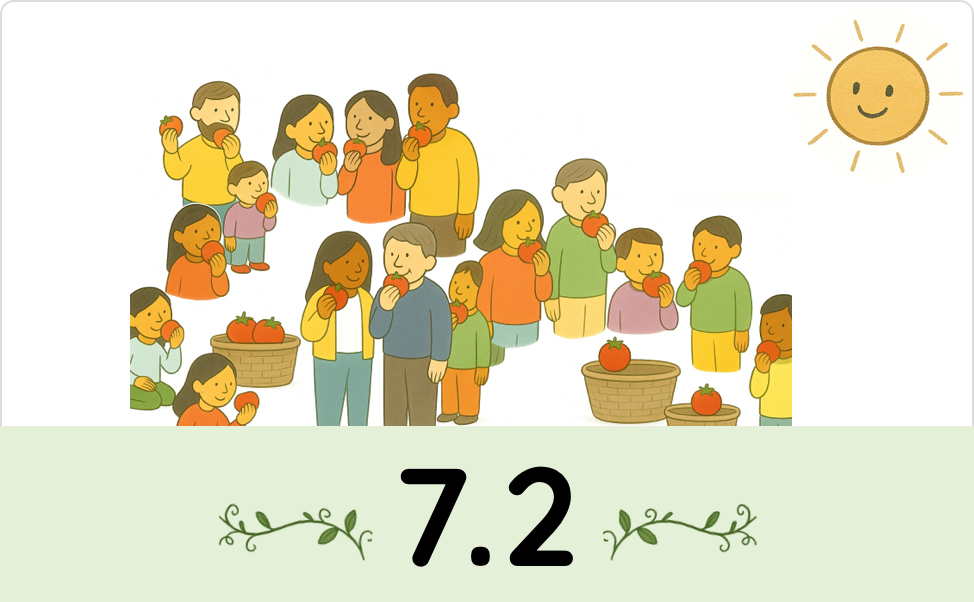
7.2 days of learning
We delivered 7.2 days of learning: 3.7 Board Game, 3.5 Café Game.
What does that mean?
By “learning time,” we mean the collective time people spent learning. If we have two people playing a game that takes 15 minutes, we count that as 30 minutes (or 0.02 days) of learning time.
90 HOURS BOARD GAME
During the Board Game, we’re too busy to track the actual duration of each game, so we use an estimate of the average duration of a game. Occasionally, we’ll measure a game and have found that games are pretty consistent, and that measured times align pretty closely with facilitators’ estimates.
The one twist is that not everyone plays the game to completion — most often because very young children lose interest. We offer all players the opportunity to break off about half way through the game, and these “partial” games are also of pretty consistent duration. Fortunately, there are few enough partial games that they are memorable, “that woman who got a phone call and had to go,” “the two little kids who just timed out.” So, while we do our best to track the number of partial games, facilitators can give us a reliable count at the end of the day.
We then calculate learning time from the number of full/partial games played, the average duration of a full/partial game, and the average number of players per game.
While this is an approximation, we’re confident that errors are on the side of underestimation.
83 HOURS CAFÉ GAME
For the Café Game, we pretty much know when games started and ended, so we only need to do the multiplication with the number of people playing. Occasionally, someone will need to leave before the game is over. This doesn’t happen often, and we ignore it. So we might be overestimating by a few minutes — nothing statistically significant.
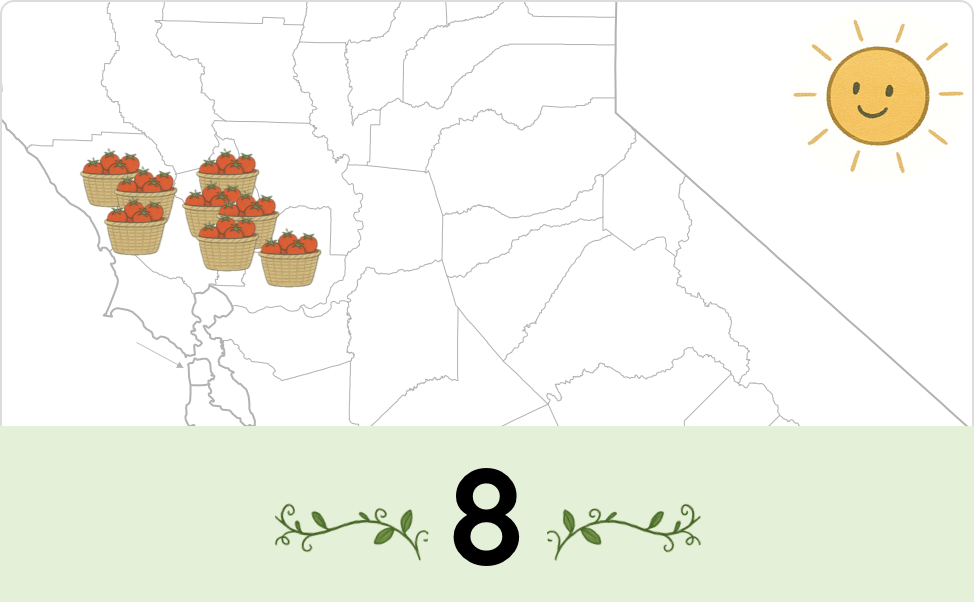
8 community events
We played at 8 different community events: 5 Board Game, 3 Café Game.
Where were we?
5 Board Game
- 1/21, Sebastopol CA, Farmers market
- 2/10, Geyserville CA, Community festival
- 3/16, Napa CA, Preparedness fair
- 5/04, Lake Solano County Park CA, Preparedness fair
- 5/19, Cloverdale CA, Preparedness fair
3 Café Game
- 6/12, Yountville CA, Public workshop
- 7/16, Napa CA, Membership meeting
- 9/20, American Canyon CA, Private workshop
3 Counties
This year we added Solano county while steadily growing our engagement in Napa and Sonoma counties!
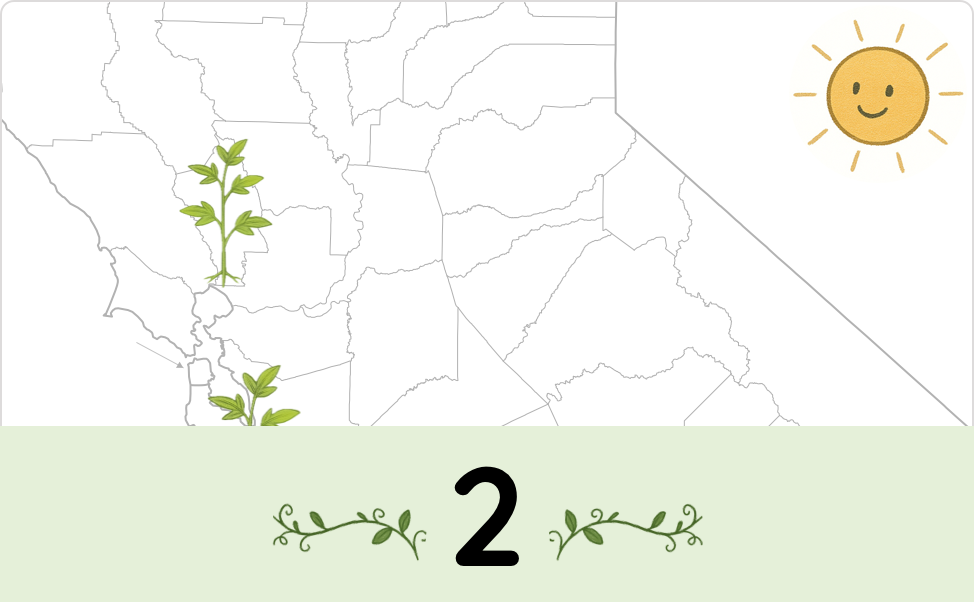
2 partners in collaboration
We have 2 long-term collaboration partners.
Who are they?

This year we welcomed a new long-term partnership with researchers at UC Santa Cruz. They are studying ways of evaluating the impacts of game-based learning, with a particular interest in games for developing individual and community resilience.

We continued to deepen our partnership with Napa Valley COAD, working with them to bring the power of fun and games into their efforts to help Napa Valley communities prepared for disaster.
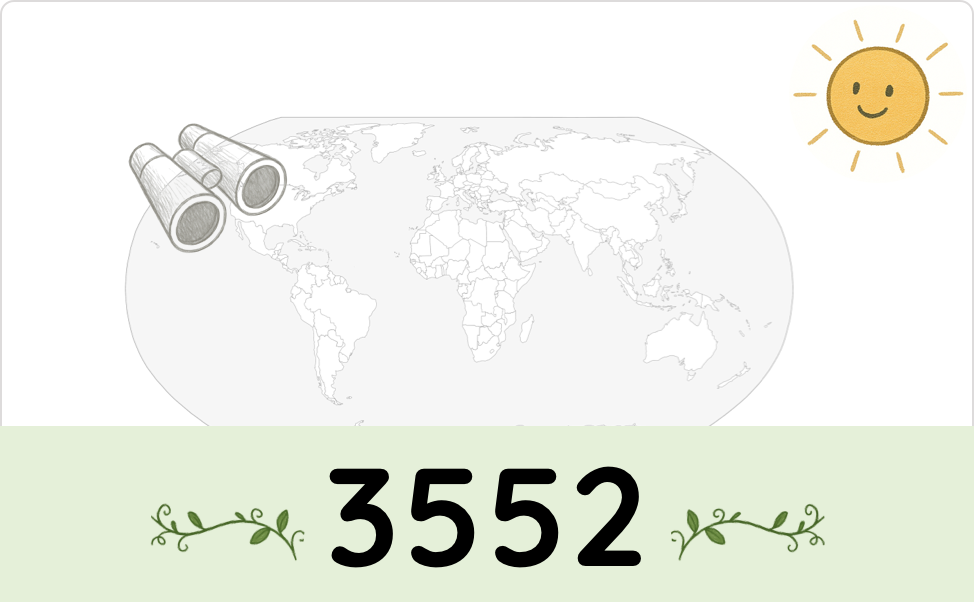
3552 digital friends
We enjoyed 3552 visitors and friends across our digital media channels.
Where did they find us?
~3400 website visitors
We had ~ 3400 website visitors who spent an average of 1m 08s on the site. ~3300 were first-time visitors.
66 mailing list subscribers
We added 8 new subscribers to our mailing list, ending the year with a total of 66.
86 LinkedIn followers
We added 11 new LinkedIn followers, ending the year with a total 86.
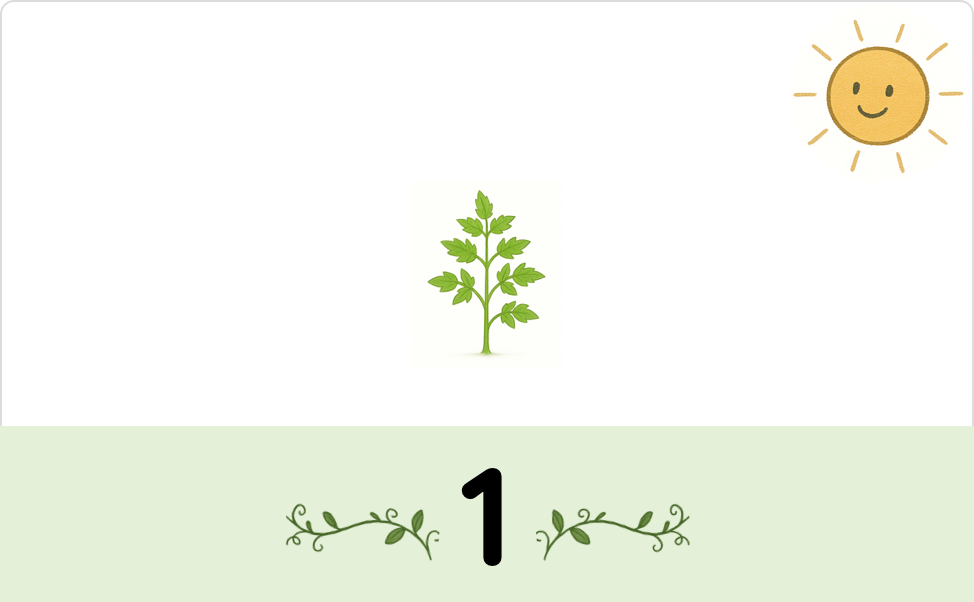
1 Corporation
We established 1 Corporation with 501(c)3 status.
What are the details?
State of incorporation: California
Entity name: Creative Crisis Leadership
Entity type: Nonprofit Corporation – CA – Public Benefit
Date of incorporation: 1/22/2024
EIN: 99-1158114
Tax status: Exempt under Internal Revenue Code Section 501(c)(3)

18 volunteers
Over the year, we worked with 18 different volunteers.
What did they do?
- Designed and delivered games at community events
- Managed website, wrote reports and blog posts
- Oversaw governance and developed plans
- Managed finances and other business matters
- Configured and migrated years of contact data to Salesforce CRM
- Configured and organized years of photos and other digital assets in Box

5 new technical platforms
To support the new business, we adopted 5 new technical platforms.
What were they?
- Salesforce (CRM)
- Quickbooks (Accounting)
- GiveLively (Donation processing)
- Stripe (Payment processing)
- Box (Digital asset management)
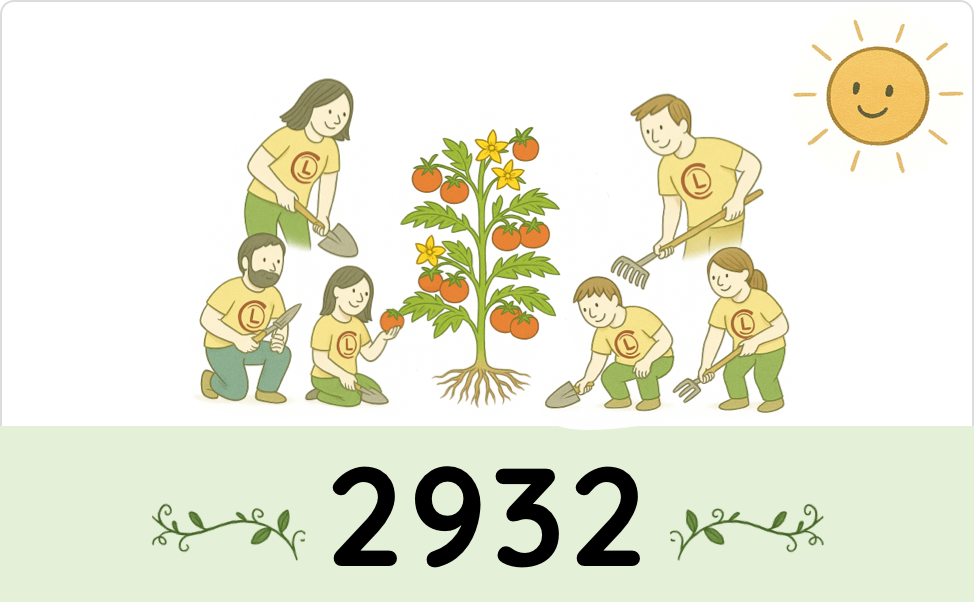
Volunteer Hours
Volunteers donated 2932 hours (at least), valued at $102,011*.
Where did the time go?
Because of the prodigious effort of preparing corporate documents and business applications, at least half of our hours were devoted to business-related planning and administration tasks. About a third of our time went to designing games and delivering them at community events. We spent the rest on developing our team and supporting infrastructures.
*Based on an average value of a volunteer hour of $34.79, as estimated by Independent Sector.

Income & Expanses
We took in a total of $2,316, and spent a total of $4,042.
Income & Expense details
Income — $2,316 (100%)
- Individual donations: $2,316 (100%)
Expenses, Operational — $2159 (53%)
- Staff development: $400 (19%)
- Business licenses & fees: $700 (32%)
- IT & software: $1059 (49%)
Expenses, Program — $1884 (47%)
- Event fees: $100 (5%)
- Materials & Supplies: $666 (35%)
- Travel: $1117 (59%)

Financial Position
We have a cash reserve of $16,470, no restricted funds, and no liabilities.
2024/01/01 – 2024/12/31
Starting balance: $18,196
Income: $2,316
Expenses: -$4,042
Ending balance: $16,470
What did we accomplish?
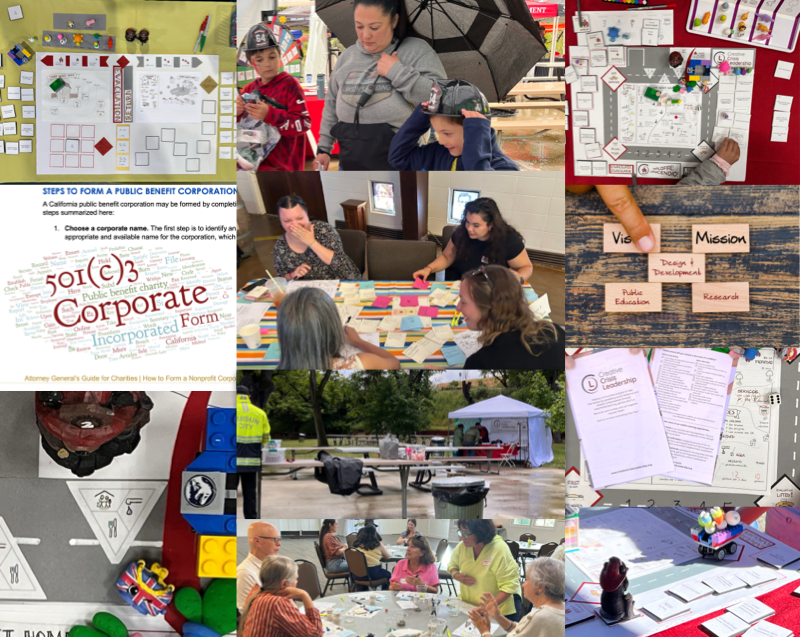
A quick look at what kept us busy in 2024.
Looking back, we are very proud of our accomplishments in three areas: Cultivating our organizational foundation, Branching out, and Growing impact.
Putting down organizational roots

The legal process for establishing a 501(3) is not trivial!
2024 was a pivotal year for us: we successfully established a California Public Benefit Corporation and obtained 501(c)(3) status. This transition included a fond farewell to Social Good Fund, our valued fiscal sponsor for the past four years. Under their generous umbrella, we gained our footing and learned sound nonprofit administration practices. We are now ready to take on the responsibilities and opportunities of independent status, including access to a broader range of funding sources.
To build a robust operational framework, we implemented five essential business technologies: Salesforce (CRM), Box (digital asset management), QuickBooks (accounting), GiveLively (donation management), and Stripe (payment platform). We are deeply grateful for the pro bono support of talented student teams from the San Jose State University MIS Honors Program, who expertly researched, configured, and provisioned Salesforce and Box for us. Their contributions were instrumental in streamlining our data management and collaboration processes. Our 501(c)(3) status allows us to take advantage of free or heavily discounted licenses, reducing overhead and ensuring that more resources go directly to our mission.
We also expanded our library of legal agreement templates to strengthen clarity, professionalism, and compliance. In addition to existing templates for a Memorandum of Understanding (MOU) and a Conflict of Interest Disclosure, this year we developed standard Volunteer and Non-Disclosure Agreements—further reinforcing a strong foundation for future growth.
You can download our public documents from our About Us page.
Spreading out branches

Six happy team members!
We were fortunate to expand our core volunteer team this year, welcoming two new members and bringing our total to seven dedicated individuals — a testament to our positive and supportive environment 😁. We also benefited from the expertise of partner organizations, including the contributions of eleven enthusiastic students from San Jose State University.
Our commitment to strategic partnerships continues to flourish. We strengthened our collaboration with Napa Valley COAD, working together to bring our games to more community events and learning what they need to integrate game-based learning into their training programs. We also launched a new research partnership with the GUILab at UC Santa Cruz — an important step toward our vision of equipping community organizations with effective, evidence-based learning materials.
To further knowledge sharing and exchange, we convened a Research Roundtable on “Emotional & Psychological Safety in RPGs.” This productive discussion connected researchers and practitioners in role-playing games and leadership studies, sparking new ideas for creating trust among players quickly.
We intentionally kept our social media activity limited. While we recognize its importance, we are also mindful of the potential distractions it brings. Even so, our website attracted 3,400 users (3,300 of them new) with an average engagement of 1 minute and 8 seconds. Our nineteen blog posts proved to be a valuable resource, driving traffic and sharing critical insights. Notably, our 2021 post, “How are wildfires measured?” remains a top performer, drawing twice as much traffic as our homepage and underscoring the lasting relevance of our content. We also saw steady growth in direct community engagement, with our mailing list expanding to 66 subscribers (8 new) and our LinkedIn following reaching 86 (11 new).
Bearing fruit

Having fun testing an early version of the Café Game.
Much of our work this year was devoted to planting a solid organizational foundation and nurturing a healthy network. But we never lost sight of our primary mission of fostering a more prepared and resilient world.
Our Wildfire Board Game continues to delight and educate players of all ages. In 2024, we refined it to be even more effective and easier to play. We brought it to five community events across three counties, including our first appearance in Solano County, reflecting our expanding regional impact. We put our resolve of meeting people where they are into practice by taking the game to non-preparedness events including a community festival and a farmers market.
At the community festival, people waided in line to learn about wildfire preparedness:
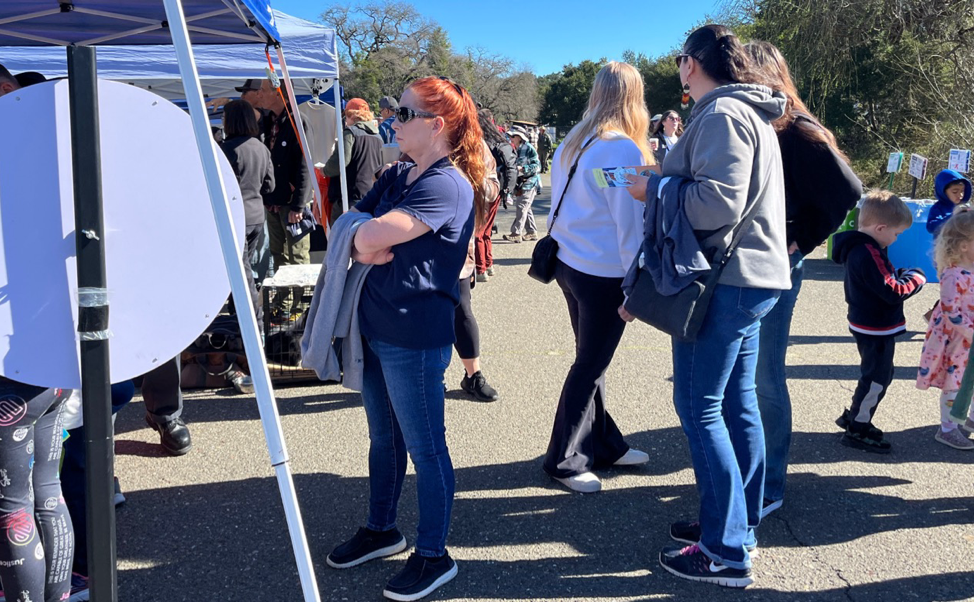
Lining up to learn about wildfire preparedness!
At the farmers market, people stayed to play in spite of steady rain:
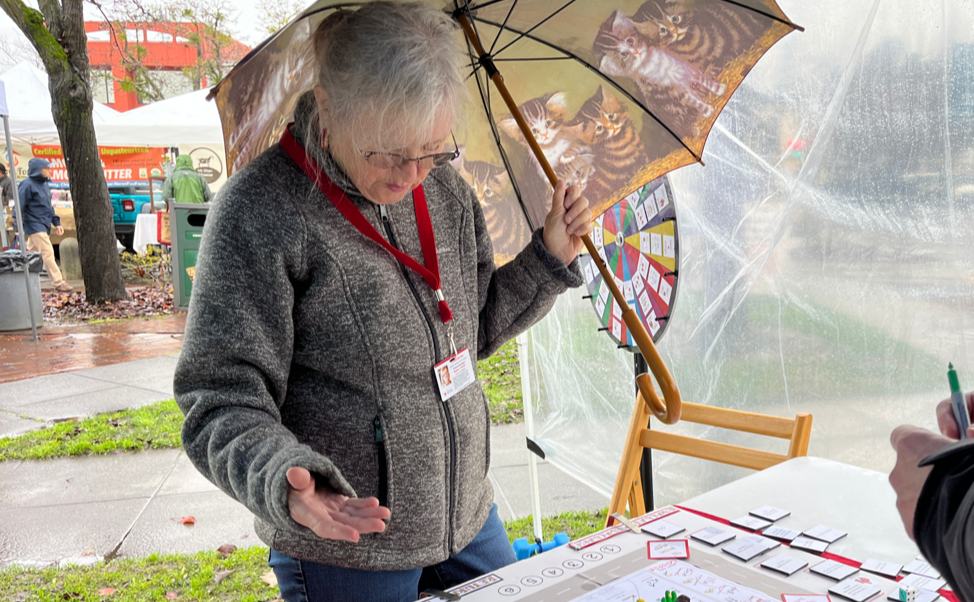
Playing in the rain!
Altogether, we facilitated 66 game plays with 310 participants, totaling 90 hours of fun and learning, rain or shine, and demonstrating that people are eager to learn about wildfire safety when the learning is fun and engaging.
We also experimented with our Wildfire Café Game, testing different versions at three different events. Though still evolving, it drew in 64 participants who spent 83 hours engaged in laughter, lively discussions, and shared problem-solving — clear signs of its promise as a powerful tool for resilience learning:
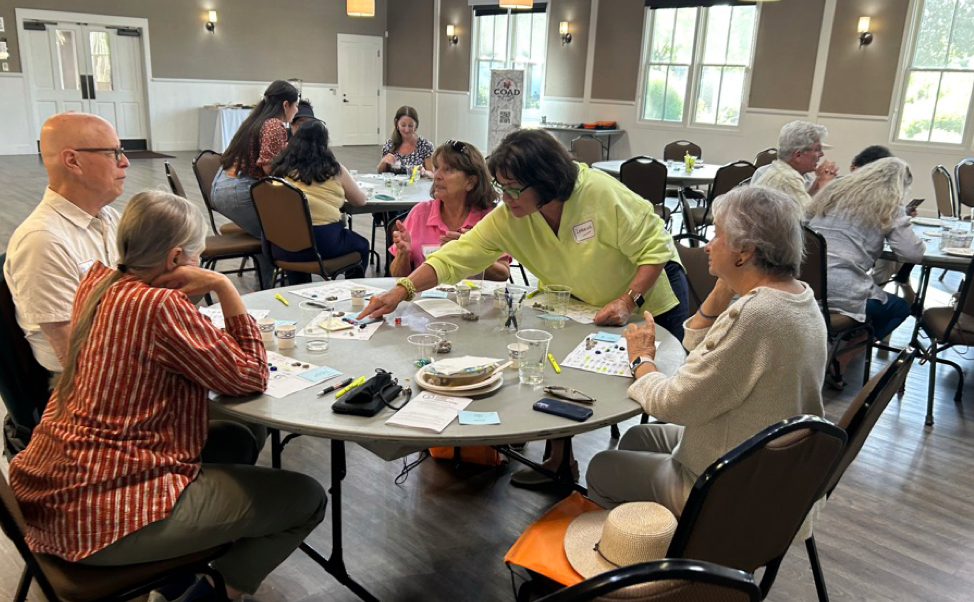
Neighbors helping neighbors.
How did we do on our goals?
In our 2023 Annual Report we laid out priorities and goals for 2024. Here is our assessment on how well we met them.
- ★ A green star means the goal was fully achieved.
- ⏺ A yellow filled circle means the goal was partially achieved.
- 𐩒 A red hollow circle means the goal is in progress.
- – A dash means the goal was not achieved.
1
Increase our ability to grow our impact by focusing on organizational and business development.
- ★ Become an independent 501(c)3. Among other things, this will allow us to apply for government grants.
- ★ Develop partnerships and active collaborations in Napa/Sonoma so that we can reach more people and open funding opportunities.
- ⏺ Recruit volunteers at all levels, from board members to community trainers.
- 𐩒 Cultivate a wider variety of funders and revenue sources.
2
Deepen our impact by evolving and expanding our learning experiences.
- 𐩒 Mature our current community experiences, and our Think – Talk – Do product model: Short learning experiences (Holiday puzzles, Board game) that aim to get people to Think about disaster preparedness, more elaborate experiences (Café game) that get them to Talk about it, and full-on experiences (Live action workshops) that get them to Do something about it.
- – Develop Train-the-trainer experiences for our current community experiences.
- – Adapt learning experiences to meet the needs of our partners and their communities.
3
Measure our impact by taking steps toward a systematic and rigorous evaluation program.
- 𐩒 Develop research instruments that reliably measure learning and behavioral change.
- – Explore data collection methods that yield effective response rates without disrupting learning experiences or swaying behaviors.
- – Gather and analyze data to assess the short-term impact of our current learning experiences.
4
Continue to have an impact.
- ★ Bring our learning experiences to more community events,
- ⏺ Foster knowledge exchange among researchers and professionals, and
- ★ Seize opportunities to promote understanding of social resilience, community empowerment and disaster preparedness.
What did we learn?
We are on the right track to a major and lasting impact!
Our activities directly contributed to our mission by enabling us to develop and spread accessible and engaging disaster preparedness education. The hands-on nature of the game-based approach fosters social resilience and empowers individuals to take action. The measurable outcomes, such as the number of players and learning hours, demonstrate our reach. The qualitative feedback from participants reinforces the effectiveness of our approach.
We need to develop more flexibility in our planning strategies.
Securing our independence and 501(c)3 status were pivotal achievements in 2024, marking our maturity and enabling us to pursue broader funding opportunities. However, we significantly underestimated the time and resources it would take to complete the associated filings and administrative tasks. This required a significant reallocation of our resources, impacting our progress on other planned initiatives.
We need to be more comprehensive and detailed in our planning, ensuring that all areas of effort are clear and accounted for.
The implementation of new infrastructure technologies, while not explicitly outlined in our initial goals, emerged as a critical priority. While successful, this required a shift in focus, affecting our progress on other strategic objectives.
We are underresourced.
Our main takeaway from 2024 is that our ability to scale our impactful learning experiences and further our mission is significantly constrained by resource limitations. Moving forward, we recognize the critical need to address our resource constraints and optimize the allocation of our volunteers’ expertise. We plan to explore options for administrative support, continue to streamline administrative processes, and seek skilled volunteers for specific administrative tasks. This will allow our talented team to focus on their core competencies and maximize our mission impact.
2025 priorities and goals
Our goal for 2025 is
To foster sustainable growth and impact through strategic product and organizational development, using the Wildfire Café Game and targeted team expansion as core drivers.
Taking heed of what we learned in 2024, we have separated our priorities and goals for 2025 into three levels based on the amount of optimism needed to think that we can accomplish them: Target, Aspirational, and Stretch Goals.
These are our Target Goals:
1
Expand impact, reach, and trustworthiness by advancing and promoting the Wildfire Café Game.
- Complete game design: Bring the Wildfire Café Game to partner-ready distribution status.
- Implement outcome assessment: Establish robust assessment of game effectiveness.
- Advance game adoption in Napa & Sonoma: Secure game adoption in current service areas (Napa and Sonoma).
2
Advance sustainability and support growth by strengthening business framework and capacity.
- Develop a business plan, including revenue generation plan: Develop a robust business plan, including a realistic revenue generation plan.
- Diversify revenue streams and secure funding: Diversify revenue streams, raising sufficient funds to transition key personnel from volunteer to (moderately) paid staff.
- Implement foundational HR management: Formalize key volunteer and collaboration agreements and develop foundational HR capacity to strengthen business operations.
- Build outreach and networking capacity and efforts: Strategically improve strategy, capacity, and efforts in outreach and networking to promote organizational competency and success.
For our Aspirational and Stretch Goals, and the full gory plan, see the Executive Director’s Report to the Board.
With heartfelt gratitude
LONG-STANDING TEAM MEMBERS
Susanne Jul, Garett Dworman, Zach Pipkin, Gary Milante, Robin Parvin, Lindsay Burr
NEWEST TEAM MEMBERS
Neetu Deka
STEADFAST CONTRIBUTORS and SUPPORTERS
Anonymous — You know who you are!
Evan & Nancy Joy Wilsnack, Ford Johnson, George Furnas, Kirsten Olson, Leanne Clement, Leslie Agan, Maurita Holland
OUR HARD-WORKING BOARD of DIRECTORS
Lindsay Burr, Chair & President
Susanne Jul, Treasurer
Garett Dworman, Secretary
OUR TRUSTED ADVISORS
Aaron Vanek, Claus Raasted, Gary Milante, Leland Franklin, Luke Beckman, Zeno Franco
See others who have helped to enable and empower us on the
2024 Wall of Gratitude.
Our mission
To inspire, educate, and motivate everyone, everywhere, to prepare for disaster through fun, play, and imagination.
Because fun is more motivating than fear, and everyone deserves the best chance possible to survive and thrive when their world falls apart.
0 Comments